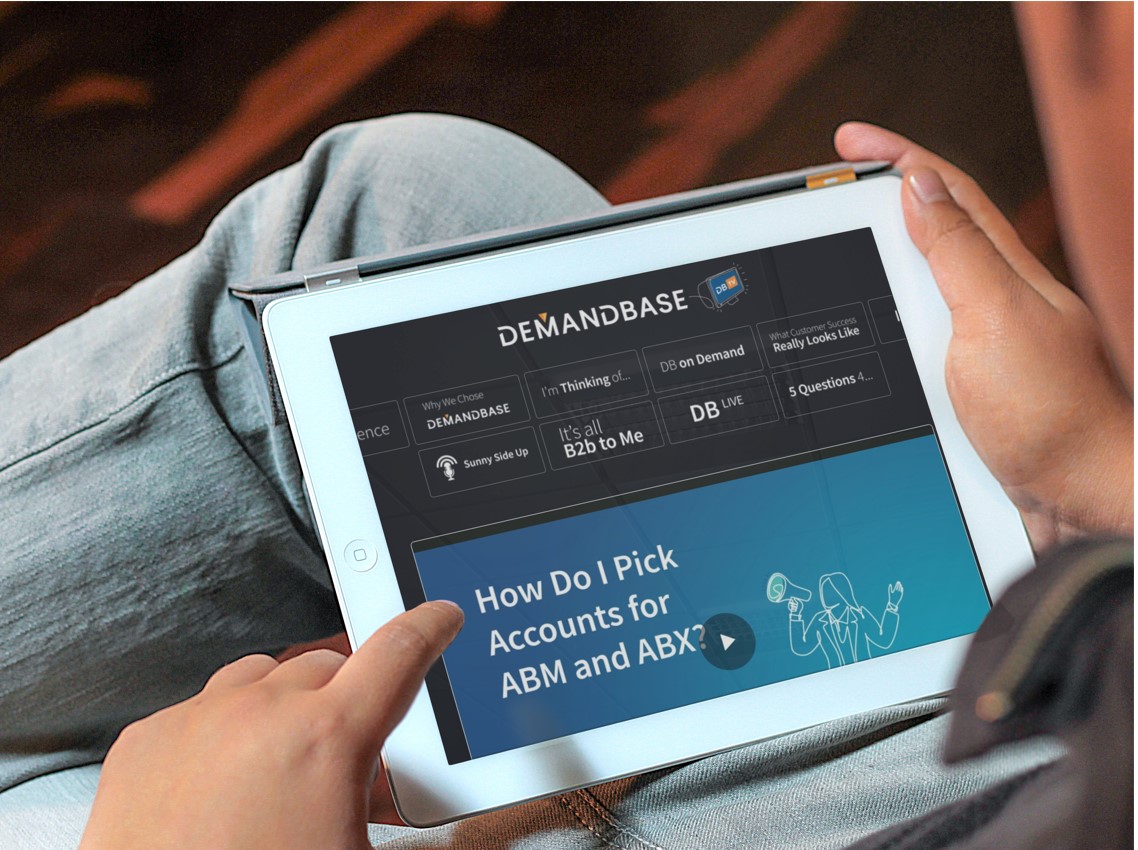B2B & Chill: An Analysis Of On-Demand Streaming Services In Marketing
- Written by Kelly Lindenau
- Published in Industry Insights
Consumer streaming services hold the lion’s share of the at-home entertainment market, with predictions estimating these services will generate $184 billion by 2027. On-demand video services are one of modernity’s simple pleasures, and various B2B organizations are recognizing their untapped potential. Companies such as Demandbase, Terminus and Salesforce all created their own form of B2B content streaming designed to reach target audiences exactly where they are: At home.
While the evolution of B2B streaming services was a natural industry progression, there’s no arguing that the Covid-19 pandemic and subsequent global lockdowns accelerated the trend’s development. According to Salesforce research, 88% of customers expected companies to accelerate digital initiatives in the wake of the pandemic, with 62% indicating they conduct their lives online. Coupled with the continued inclusion of B2C strategies in B2B campaigns, shifting societal trends and a new cohort of industry leaders, the perfect storm was created to start moving video marketing into its next era.
“Content consumption methods are changing quickly, largely due to demographic shifts,” said Justin Keller, VP of Marketing for Terminus. “Two out three B2B decision-makers are now Millennials, and they don’t love sitting there and reading a blog or a white paper. Cable TV is also somewhat antiquated at this point — people want to watch what they want, when they want and they don’t want to be encumbered by ads (for the most part). Think of it like TikTok: People want to learn something new, get a good idea and have a laugh in under two minutes.”
The three main streaming contenders in B2B include Terminus with Terminus TV, Salesforce with Salesforce+ and Demandbase with DBTV. Jon Leiberman, VP of Content, Social and Influencer Marketing at Demandbase, explained that the company saw 10,000 views on DBTV in the first month, which “dwarfed anything we’ve ever done.”
With the strategy already delivering impressive results, it’s time to examine the factors fueling its success, understand what audiences are looking for and learn how to harness the full power of this strategy.
Say Hello To Marketing’s Little Friend

For marketers who paid attention, the rise of streaming services was always right in front of them. Demand Gen Report’s (DGR) “2021 Content Preferences Survey” revealed that 62% of marketers rely on more content to make B2B purchasing decisions, with 44% saying they typically consume three to five pieces of content before engaging with a vendor.
The non-statistical component driving streaming services is individuals’ personal and professional preferences starting to bleed together. Whether they are an eight-figure CEO or an entry-level office assistant, chances are they’ve both binge-watched “Stranger Things” — and loved the accessibility and on-demand consumption capabilities.
“You started with Netflix and Hulu, and we all subscribed to them,” said Eric Rudolf, VP of GTM for Brightcove, a live streaming and video communications platform. “As companies liked having those services in their personal lives, you saw them implementing corporate Netflix/Youtube-type channels for their employees, which took off. From there, companies realized they could widen the lens of their corporate channels to create content that appeals to external people. We’re in a stage right now where companies are finally dipping their toes into streaming.”
Nobody Puts Video In A Corner

While the premise is the same — applications that feature on-demand, personalized content — the execution is different. For its part, Terminus opted for a slower start to test the waters before diving in head-first.
“We started flirting with the idea of very consumable video content, so we released about 25 to 30 two-minute videos,” said Keller. “Within four or five months, they had gotten around 55,000 views — it blew us away. We were like ‘Okay, let’s do more of this in different shapes and content forms,’ which turned into Terminus TV. It launched with five shows, and it will be a new publishing platform for us going forward. We’ll constantly be releasing new content, such as a sitcom and a feature-length documentary, and it’ll be available for download on Roku, Fire TV and Apple TV.”
On the other hand, DBTV launched with 80 pieces of never-before-seen video content and plans to push out two to five pieces every week. Leiberman explained that it was important for the company to create brand-new content, as “we didn’t just want to aggregate videos that were already living on the site and put them together.”
He continued that the main purpose of DBTV — in addition to educating prospects and delivering personalized content — is to present the brand as what it is: Human.
“We want to communicate how you would with a B2C brand or TV network,” said Leiberman. “The first goal was to create content that is entertaining and informative, and to make it easy for the audience to consume. Historically, so much B2B content is gated, so we made DBTV completely ungated so you can watch whatever you want, whenever you want and wherever you want.”
As more organizations create streaming services, it’s undeniable that the platforms will be similar because they’re all built on the same premise: Providing customers with educational, engaging content to encourage further action with a brand. The unavoidable influx of streaming services is fueling organizations to remain one step ahead in the diversity of their offerings.
“Honestly, I hope the streaming field does become a bit oversaturated,” said Keller. “Because then it isn’t about the availability or the kind of media strategy; it’s about the creativity and execution behind it.”
Houston, We Have A Platform
Given the popularity surrounding streaming services — “I’ve had three different customer calls asking how they can set up their own streaming platform,” said Leiberman — the industry will undoubtedly see new platforms released and current services expanded.
Marketers should tread lightly when making their entry into streaming services, as it looks deceptively easy. Brightcove’s Rudolf explained that it’s simple to get started, but scaling the platform and providing high-quality content is more difficult than it seems.
“Success with streaming services ultimately comes down to the security, scalability, screen reliability and quality of the videos,” he continued. “You can put together the best experience, but if the stream buffers, drops a lot, the picture is bad and you’re easily hackable, then you fail. You can’t just use your standard enterprise content management system. If you’re successful with your video platform and experience and you have thousands of viewers each day, it’s going to take some juice to deliver the right video to the target audience and protect their identities.”
B2B streaming services are still in their infancy, but there’s no doubt these platforms will ultimately become an industry mainstay. As more organizations throw their hats into the streaming ring, the field will become more diverse with platforms that vary in scale, specialty and offering.
“A streaming arms race would make life for marketers a lot of more fun and push their creativity,” said Keller. “They have to get scrappy and start thinking like a TV producer. A lot of people didn’t get into B2B to think about their media streaming strategy, but here we are.”


